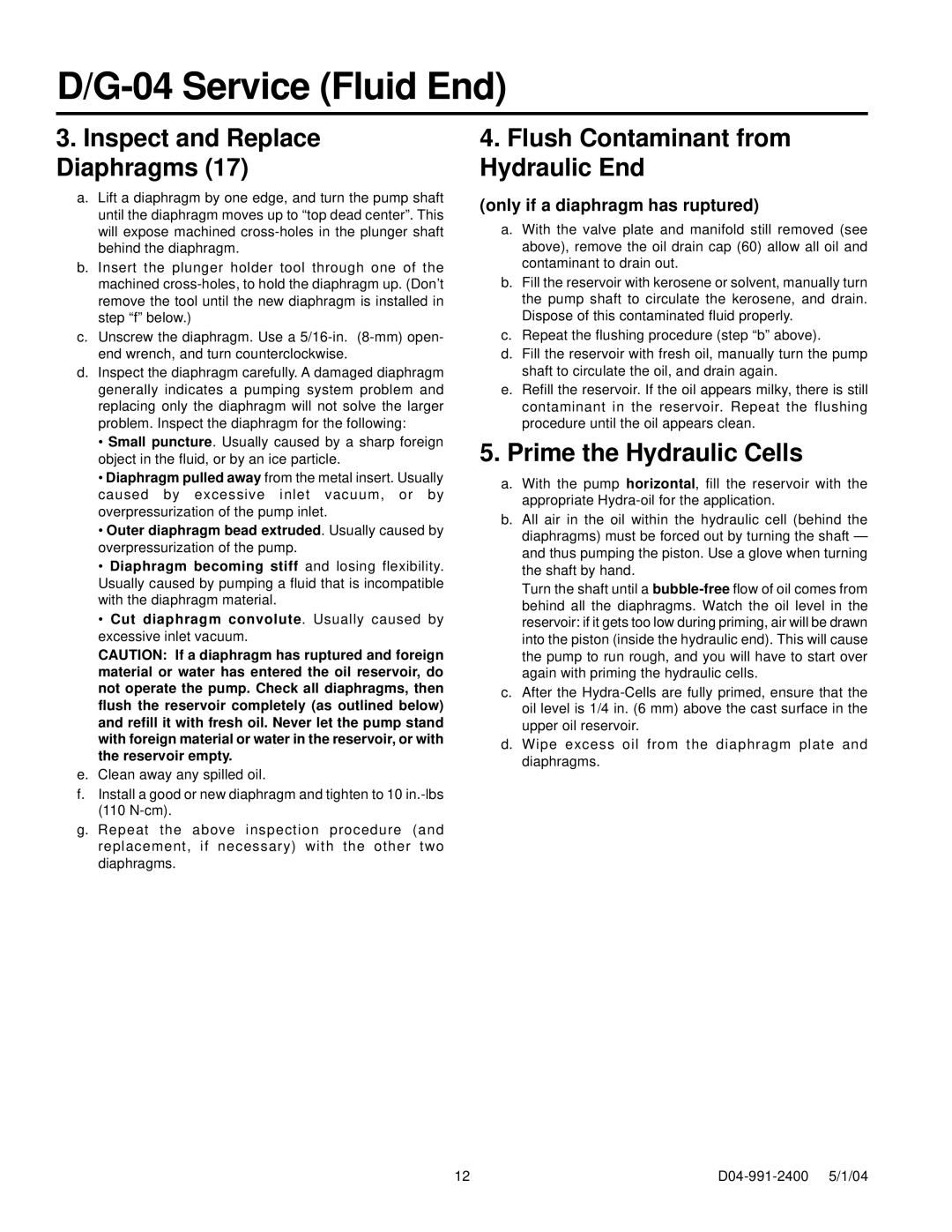D/G-04 Service (Fluid End)
3.Inspect and Replace Diaphragms (17)
a.Lift a diaphragm by one edge, and turn the pump shaft until the diaphragm moves up to “top dead center”. This will expose machined
b.Insert the plunger holder tool through one of the machined
c.Unscrew the diaphragm. Use a
d.Inspect the diaphragm carefully. A damaged diaphragm generally indicates a pumping system problem and replacing only the diaphragm will not solve the larger problem. Inspect the diaphragm for the following:
•Small puncture. Usually caused by a sharp foreign object in the fluid, or by an ice particle.
•Diaphragm pulled away from the metal insert. Usually caused by excessive inlet vacuum, or by overpressurization of the pump inlet.
•Outer diaphragm bead extruded. Usually caused by overpressurization of the pump.
•Diaphragm becoming stiff and losing flexibility. Usually caused by pumping a fluid that is incompatible with the diaphragm material.
•Cut diaphragm convolute. Usually caused by excessive inlet vacuum.
CAUTION: If a diaphragm has ruptured and foreign material or water has entered the oil reservoir, do not operate the pump. Check all diaphragms, then flush the reservoir completely (as outlined below) and refill it with fresh oil. Never let the pump stand with foreign material or water in the reservoir, or with the reservoir empty.
e.Clean away any spilled oil.
f.Install a good or new diaphragm and tighten to 10
g.Repeat the above inspection procedure (and replacement, if necessary) with the other two diaphragms.
4.Flush Contaminant from Hydraulic End
(only if a diaphragm has ruptured)
a.With the valve plate and manifold still removed (see above), remove the oil drain cap (60) allow all oil and contaminant to drain out.
b.Fill the reservoir with kerosene or solvent, manually turn the pump shaft to circulate the kerosene, and drain. Dispose of this contaminated fluid properly.
c.Repeat the flushing procedure (step “b” above).
d.Fill the reservoir with fresh oil, manually turn the pump shaft to circulate the oil, and drain again.
e.Refill the reservoir. If the oil appears milky, there is still contaminant in the reservoir. Repeat the flushing procedure until the oil appears clean.
5.Prime the Hydraulic Cells
a.With the pump horizontal, fill the reservoir with the appropriate
b.All air in the oil within the hydraulic cell (behind the diaphragms) must be forced out by turning the shaft — and thus pumping the piston. Use a glove when turning the shaft by hand.
Turn the shaft until a
c.After the
d.Wipe excess oil from the diaphragm plate and diaphragms.
12 |
